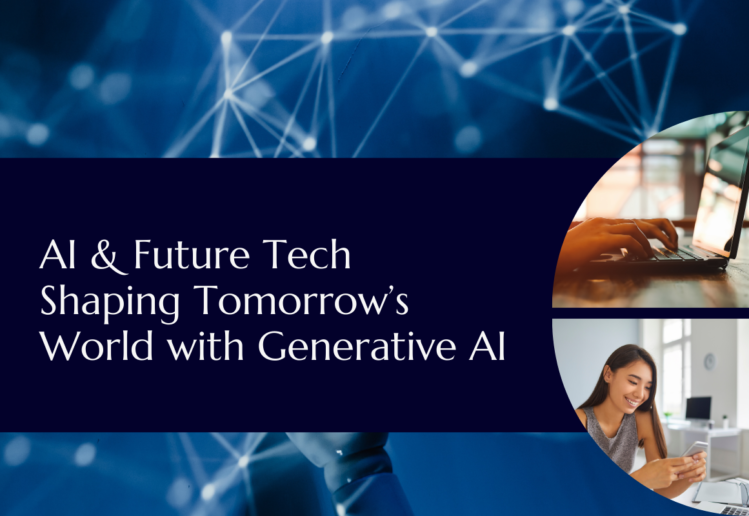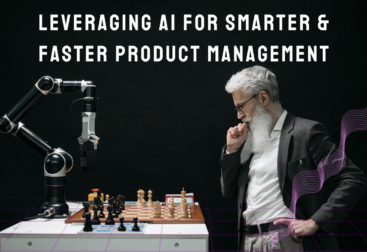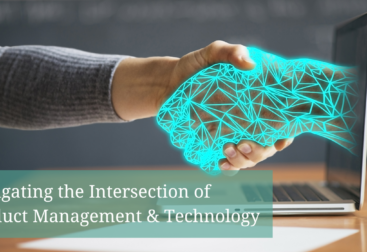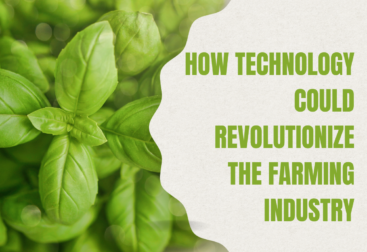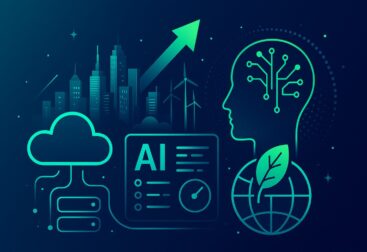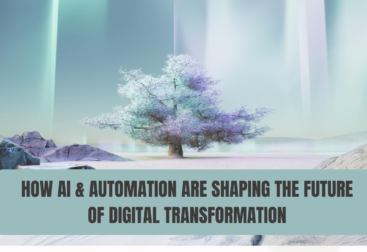The future of technology is being shaped by artificial intelligence (AI), a driving force that is transforming industries, redefining business models, and reshaping society itself. Among the various branches of AI, “Generative AI” is one of the most groundbreaking, pushing the boundaries of creativity, automation, and innovation. Let us explores the role of AI and emerging technologies in the future, with a special emphasis on generative AI and its wide-ranging impact on sectors like healthcare, education, entertainment, and more.
The Evolution of AI – From Automation to Intelligence
Artificial intelligence has undergone rapid evolution over the past decades. From early rule-based systems that automated simple tasks to today’s deep learning algorithms capable of complex pattern recognition, AI has reached new levels of sophistication.
Initially, AI was used to perform repetitive tasks like data entry or anomaly detection in industries such as finance and manufacturing. However, with the advent of (ML) and neural networks, AI now has the ability to learn, adapt, and make independent decisions based on vast datasets. This progress is accelerating, with AI moving beyond automation to drive innovation in various sectors, ultimately transforming how we live and work.
Key AI Trends Leading the Future
1. AI-Driven Automation: As AI matures, automation is evolving to handle not just mundane tasks but more intricate ones that require decision-making skills, such as logistics management, legal research, and even diagnosing diseases.
2. Personalization and Recommendations: AI algorithms are becoming better at understanding individual preferences. Whether it’s e-commerce, online learning, or entertainment platforms, users receive highly personalized recommendations that cater to their tastes and needs.
3. Natural Language Processing (NLP): AI models like GPT (Generative Pre-trained Transformer) and BERT have brought natural language understanding and generation to a new level. This evolution in NLP is enabling better human-machine communication, leading to advanced chatbots, voice assistants, and real-time translation tools.
4. Generative AI: One of the most exciting innovations, generative AI can create content—from text and images to music and even 3D models. This has sparked new possibilities in content creation, design, and virtual worlds.
The Rise of Generative AI
Generative AI is perhaps one of the most transformative aspects of AI development. While traditional AI systems are designed to recognize patterns and make predictions, generative AI goes a step further by creating entirely new content that mimics human creativity. This advancement is made possible by sophisticated models like GPT-4, DALL-E, MidJourney, and others, which can generate realistic human-like text, images, videos, and even code.
Generative AI is built upon deep learning architectures like Generative Adversarial Networks (GANs) and transformers, which allow machines to generate outputs indistinguishable from human-made creations. These tools open doors to a world of possibilities across various industries, from advertising and media to healthcare and education.
Key Use Cases of Generative AI
1. Content Creation: In fields such as journalism, marketing, and entertainment, generative AI tools are being used to automate the production of articles, advertisements, video scripts, and even movie trailers. Companies like Jasper and Copy.ai help marketers craft compelling text, while platforms like RunwayML and DeepBrain create videos with minimal human input.
2. Design and Art: Generative AI has made waves in the art world. Platforms like DALL-E and MidJourney allow users to create visually stunning artwork from simple text prompts. This enables designers, artists, and even amateur users to create unique digital art for personal or commercial purposes.
3. Healthcare: Generative AI is also proving to be a game-changer in the healthcare industry. AI algorithms can generate molecular structures for drug discovery, accelerating the research and development of new treatments. AI-generated models of organs and tissues help in personalized healthcare, allowing doctors to simulate procedures before performing them on real patients.
4. Software Development: AI systems like GitHub Copilot and Tabnine are transforming software development by generating code snippets based on text prompts. This allows developers to speed up their coding process and improve productivity.
5. Virtual Environments and Gaming: The gaming industry has embraced generative AI to create rich, interactive virtual environments. AI-driven tools can generate 3D models, textures, and even game levels based on minimal inputs, allowing for more immersive and dynamic gameplay experiences.
Future Tech – AI Integration with Emerging Technologies
As we look ahead, AI’s influence will extend even further with its integration into other futuristic technologies such as quantum computing, 5G, blockchain, and the Internet of Things (IoT). The fusion of these cutting-edge technologies with AI will unlock unprecedented potential for industries and consumers alike.
1. Quantum Computing
Quantum computing promises to take AI’s computational power to unimaginable levels. While classical computers process information in bits (binary), quantum computers use qubits, which can represent multiple states simultaneously. This gives quantum computers a massive advantage in solving complex problems such as climate modeling, cryptography, and drug discovery.
When paired with AI, quantum computing could lead to faster and more accurate machine learning models, drastically improving industries like finance, logistics, and scientific research. Quantum-AI systems will process enormous amounts of data in real-time, leading to more accurate predictions and more efficient operations.
2. AI and 5G Connectivity
The global rollout of 5G networks promises ultra-fast connectivity with minimal latency. AI-powered applications—like autonomous vehicles, smart cities, and connected healthcare—will thrive in this 5G ecosystem.
For example, in the automotive industry, self-driving cars will benefit from 5G’s real-time data exchange capabilities. Vehicles will use AI to make split-second decisions based on data received from their environment, resulting in safer and more efficient transportation systems.
In healthcare, AI-driven telemedicine platforms will use 5G to provide real-time diagnostics and remote surgeries, making quality healthcare accessible even in remote areas.
3. Blockchain and AI
Blockchain, known for its decentralized and secure nature, is being integrated with AI to create more transparent and efficient systems. AI’s ability to process vast datasets and recognize patterns complements blockchain’s secure, immutable ledger technology.
For example, AI-powered smart contracts on a blockchain can automate transactions and agreements between parties without intermediaries, reducing costs and increasing efficiency. In supply chain management, AI can analyze and predict demand, while blockchain ensures transparency and authenticity at every stage.
4. IoT and AI Synergy
The IoT involves interconnected devices that collect and exchange data. AI, when integrated with IoT, can turn raw data into actionable insights. This synergy creates smart environments – like smart homes, smart factories, and smart cities – where AI-driven decisions optimize efficiency and user experience.
For instance, in smart cities, AI analyzes data from IoT sensors to manage traffic, reduce energy consumption, and improve public safety. In manufacturing, AI and IoT technologies work together in predictive maintenance systems, where machine learning models predict equipment failure, helping avoid costly downtime.
Generative AI in the Workforce – Opportunities and Challenges
While generative AI presents enormous potential, it also raises questions about the future of work. As machines become more capable of performing creative tasks, industries will need to adapt to changing job roles and skill requirements.
Opportunities
Generative AI has the potential to enhance human creativity, enabling workers to focus on more strategic and complex tasks. In fields such as design, writing, and software development, AI tools can handle routine work, leaving humans to concentrate on ideation, strategy, and problem-solving.
For example, marketers can leverage generative AI to automate content creation and data analysis, freeing up time for customer engagement and creative brainstorming. In the entertainment industry, scriptwriters may use AI to assist in brainstorming plotlines or crafting dialogue.
Additionally, AI-powered tools are fostering digital democratization, giving individuals access to advanced design, video editing, and programming tools without needing specialized training. This could lead to more diverse innovation and entrepreneurship across industries.
Challenges
The rise of generative AI also brings significant challenges. Job displacement is a major concern, particularly in industries heavily reliant on repetitive tasks. For example, content creators, copywriters, and designers may face increased competition from AI-generated work, potentially leading to job reductions or shifts in job functions.
There is also the issue of ethics and bias. AI models are trained on large datasets that may contain biases, leading to skewed outputs. In fields such as law, healthcare, or hiring, generative AI systems must be carefully monitored to avoid perpetuating bias and ensuring fairness.
Another challenge is intellectual property (IP) and ownership. With AI-generated content, questions arise about who holds the rights to the output – the user who provided the input, the AI developers, or the platform owners. The legal framework surrounding AI-generated IP is still evolving and will need to adapt as these technologies continue to grow.
AI and Future Tech – Building a Smarter & More Inclusive Future
AI, and specifically generative AI, has the power to transform industries and reshape the future of technology. While its potential is immense, success will depend on how well industries and societies manage the balance between human creativity and machine intelligence. The fusion of AI with other emerging technologies like quantum computing, blockchain, 5G, and IoT will only accelerate these transformations, enabling smarter, faster, and more efficient solutions to the world’s most complex problems.
In the years ahead, businesses, governments, and individuals must embrace AI responsibly, focusing on ethical considerations, workforce adaptation, and long-term sustainability. The future is not just about machines replacing human capabilities – it’s about leveraging AI to unlock new possibilities for humanity, driving innovation, and creating a more inclusive and equitable world. By understanding and harnessing the power of generative AI and other emerging technologies, we can shape a future where human ingenuity and machine intelligence work hand in hand for the benefit of society.

